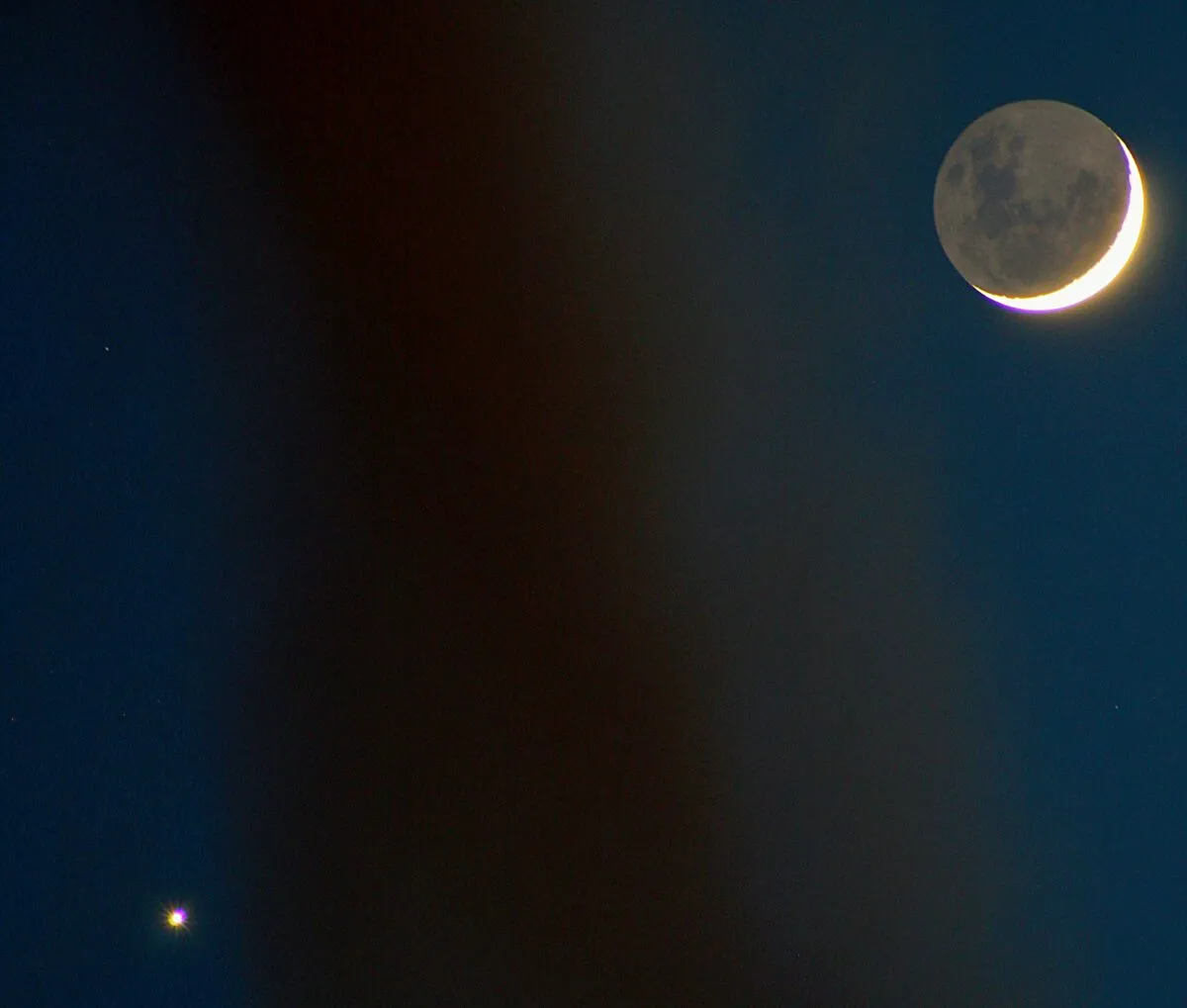Observing the Moon with the naked eye or a pair of binoculars is in itself a wonderful way to enjoy a clear, dark night sky, but the experience can be even better if the Moon happens to be located near one of the brighter planets of the Solar System.
Not only do we get to witness a wonderful conjunction, but we get to experience the mechanics of the Solar System in action. It's a reminder of our place among the many worlds orbiting our Sun.
For more advice, read our guide on how to observe the Moon or sign up to the BBC Sky at Night Magazine e-newsletter for regular stargazing info delivered directly to your email inbox.

The Moon circumnavigates the night sky once every 27.321 days, never straying far from the ecliptic.
The main planets of the Solar System also tend to remain close to the ecliptic and consequently, the Moon makes a pass of each one every month.
In July 2022 there are a series of encounters between the Moon and the planets in the morning sky, with Saturn up first.
Approaching opposition on 14 August, Saturn is currently in eastern Capricornus. It encounters a 92%-lit waning gibbous Moon on 15/16 July, the Moon passing 5˚ south of the planet.
On the night of 17/18 July it’s Neptune’s turn, although this dim mag. +7.9 planet will be tricky to see against the light from a 76%-lit waning gibbous Moon, which lies 4.2˚ to its south.
There’s no problem spotting Jupiter near the Moon on the morning of 19 July.
Shining at mag. –2.4, the gas giant appears 2.8˚ north of the Moon’s centre at 03:30 BST (02:30 UT) on 19 July.
If the day ahead is clear, try and stick with the pair after sunrise. They are due south at 06:00 BST (05:00 UT) with an altitude of 35˚.

Mars is next and its encounter gives a tantalising taste for what’s to come later in the year.
On the morning of 21 July Mars lies in the Moon’s direct path, 6.2˚ to the west.
As the day progresses, the gap reduces so that by the time they are approaching their setting point, they will be just 2˚ apart.
Shining at mag. +0.3, Mars will be a tricky daylight target. If there were no horizon, we’d see the Red Planet miss the Moon’s southern edge by just 3 arcminutes from the UK’s centre, even closer from the extreme north of the country.
There will be a series of close lunar passes with Mars over the coming months, and the Red Planet will be occulted by a full Moon on 8 December.
The 35%-lit Moon remains close to Mars on the morning of 22 July and even closer to Uranus on this date, 1.9˚ from the dimmer planet at 03:15 BST (02:15 UT).

Uranus appears 22 arcminutes north of the Moon’s centre at 07:20 BST (06:20 UT), but at mag. +5.8 under daylight conditions is out of reach.
It’ll be interesting to try and record it using an infrared sensitive camera at this time, to see whether this is possible.
Finally, on 26 July the 6%-lit waning crescent Moon lies 5.8˚ northwest of Venus, while on the morning of 27 July the now 2%-lit waning crescent lies 6.8˚ to the northeast of Venus.
The pair rise above the northeast horizon approximately 80 minutes before sunrise.
This guide originally appeared in the July 2022 issue of BBC Sky at Night Magazine.
